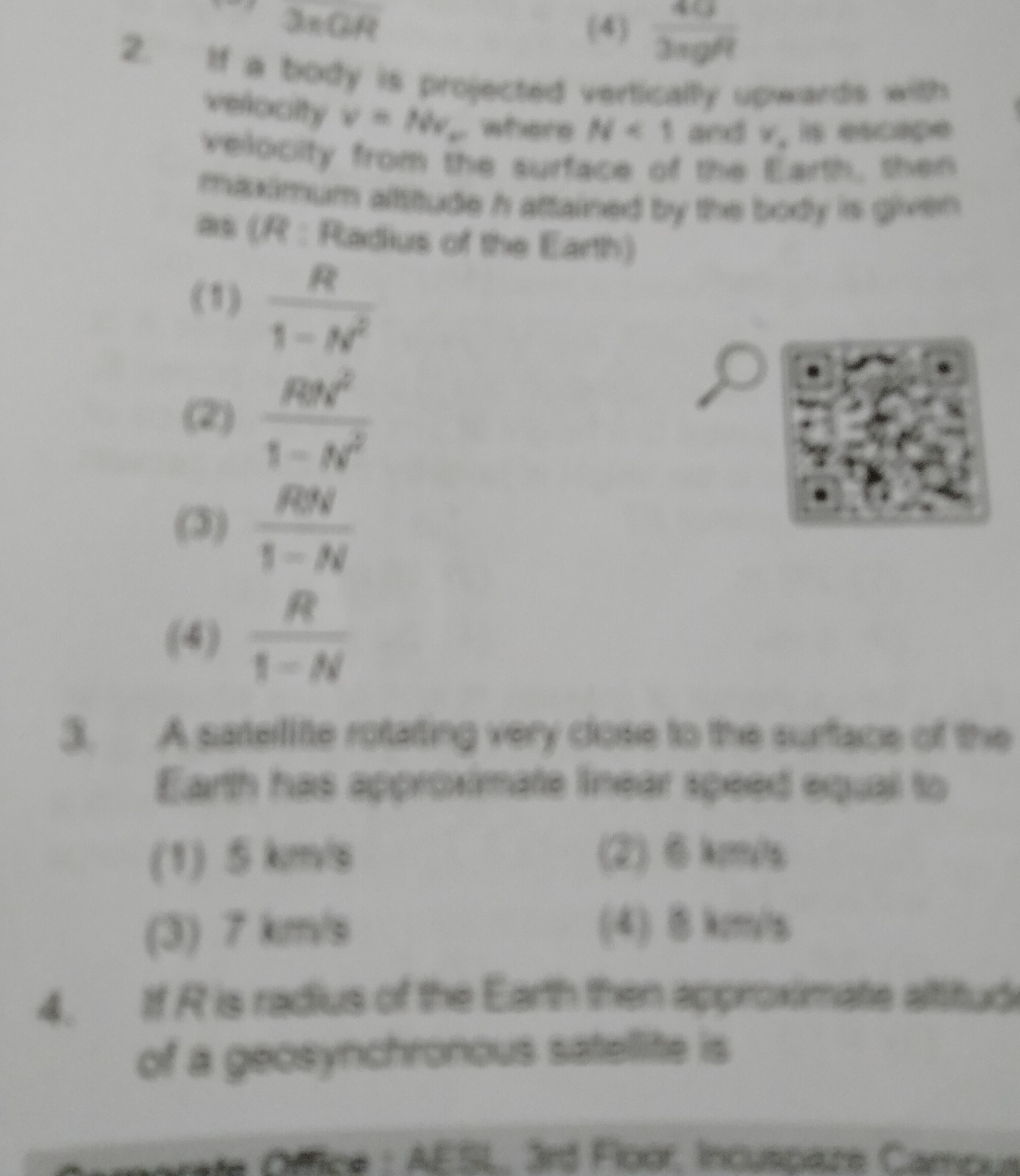Question
Question: If a body is projected vertically upwards with velocity $v = Nv_e$, where N<1 and $v_e$ is escape ve...
If a body is projected vertically upwards with velocity v=Nve, where N<1 and ve is escape velocity from the surface of the Earth, then maximum altitude h attained by the body is given as (R: Radius of the Earth)

A
1−N2R
B
1−N2RN2
C
1−NRN
D
1−NR
Answer
1−N2RN2
Explanation
Solution
Apply conservation of mechanical energy. The initial energy of the body at the surface of the Earth is Ei=21mv2−RGMm, where v=Nve and ve=R2GM. Thus, v2=N2R2GM. The energy at maximum altitude h is Ef=−R+hGMm, where the velocity is zero. Equating initial and final energies: 21m(N2R2GM)−RGMm=−R+hGMm RmN2GM−RGMm=−R+hGMm Dividing by GMm: RN2−R1=−R+h1 RN2−1=−R+h1 1−N2=R+hR R+h=1−N2R h=1−N2R−R=1−N2R−R(1−N2)=1−N2RN2
